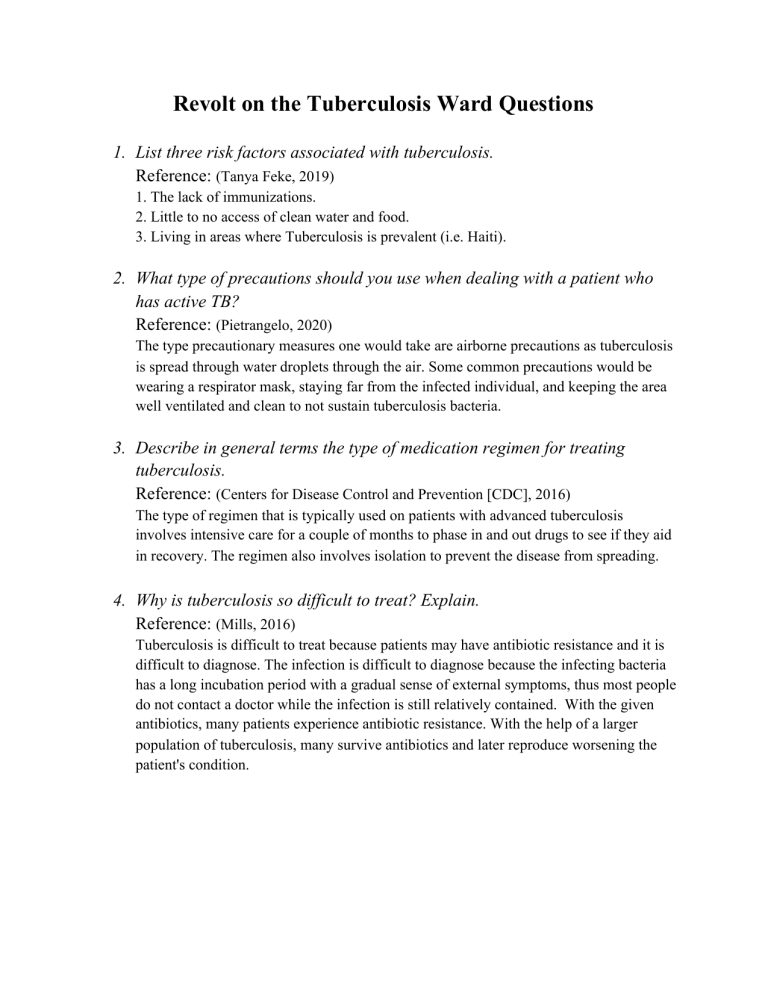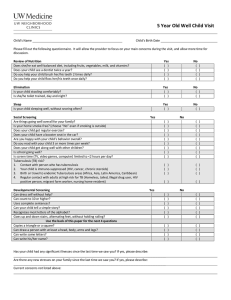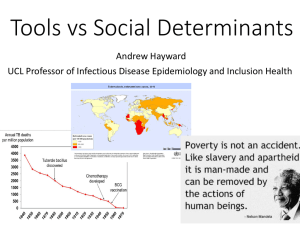
Revolt on the Tuberculosis Ward Questions 1. List three risk factors associated with tuberculosis. Reference: (Tanya Feke, 2019) 1. The lack of immunizations. 2. Little to no access of clean water and food. 3. Living in areas where Tuberculosis is prevalent (i.e. Haiti). 2. What type of precautions should you use when dealing with a patient who has active TB? Reference: (Pietrangelo, 2020) The type precautionary measures one would take are airborne precautions as tuberculosis is spread through water droplets through the air. Some common precautions would be wearing a respirator mask, staying far from the infected individual, and keeping the area well ventilated and clean to not sustain tuberculosis bacteria. 3. Describe in general terms the type of medication regimen for treating tuberculosis. Reference: (Centers for Disease Control and Prevention [CDC], 2016) The type of regimen that is typically used on patients with advanced tuberculosis involves intensive care for a couple of months to phase in and out drugs to see if they aid in recovery. The regimen also involves isolation to prevent the disease from spreading. 4. Why is tuberculosis so difficult to treat? Explain. Reference: (Mills, 2016) Tuberculosis is difficult to treat because patients may have antibiotic resistance and it is difficult to diagnose. The infection is difficult to diagnose because the infecting bacteria has a long incubation period with a gradual sense of external symptoms, thus most people do not contact a doctor while the infection is still relatively contained. With the given antibiotics, many patients experience antibiotic resistance. With the help of a larger population of tuberculosis, many survive antibiotics and later reproduce worsening the patient's condition. 5. List at least three risk factors that apply to Monique's secondary infection with Bacteroides fragilis. Reference: (Wexler, 2007) 1. The depleted condition of an immune system. 2. Antibiotic resistance 3. Unsanitary environment 6. What is the most likely source of her chest tube infection? Reference: (Saint Luke's, n.d) The most likely source of her chest tube infection is the unsanitary conditions of the hospital, uncleaned surfaces can house bacteria which when on the chest tube can cause further damage to a patient with an already weakened immune system. 7. Besides Bacteroides fragilis, what other secondary infections are common in patients who have tuberculosis? Reference: (H. Shishido et al., 1990) Secondary infections that are common in patients with tuberculosis are bronchitis, pulmonary emphysema and strep throat. 8. How likely was Monique to spread Bacteroides fragilis to those around her? Was she a risk to the other patients on the ward? Reference: (Public Health Agency of Canada [PHAC], 2010) Monique was very likely to have spread the infection to those around her due to her chest tube which was leaking. Therefore, with the unsanitary conditions along with others exposure to her infected bodily fluids, she poses a high risk of infecting those around her. References H, S., H, N., A, K., R, Y., M, T., T, N., & K, M. (1990). [Tuberculosis sequelae: secondary bacterial infections]. Kekkaku : [Tuberculosis], 65(12). Retrieved from https://pubmed.ncbi.nlm.nih.gov/2077264 Mills, D. (2016). Tuberculosis: A Difficult Disease to Eradicate. Retrieved October 16, 2020, from https://www.healthline.com/health-news/tuberculosis-difficult-to-eradicate Pietrangelo, A. (2020). What Are Airborne Diseases? Retrieved October 16, 2020, from https://www.healthline.com/health/airborne-diseases Public Health Agency of Canada (PHAC). (2010). Bacteroides spp. Retrieved October 16, 2020, from https://www.msdsonline.com/resources/sds-resources/free-safety-data-sheet-index/bacter oides-spp/ Saint Luke's. (n.d). Chest Tubes. Retrieved October 16, 2020, from https://www.saintlukeskc.org/health-library/chest-tubes Tanya Feke, M. (2019). Causes and Risk Factors of Tuberculosis. Retrieved October 16, 2020, from https://www.verywellhealth.com/causes-and-risk-factors-of-tuberculosis-4160458 Treatment Highlights of Drug-Susceptible Tuberculosis Guidelines | Treatment | TB | CDC. (2016). Retrieved 15 October 2020, from https://www.cdc.gov/tb/topic/treatment/guideline Wexler, H. (2007, October 20). Bacteroides: The good, the bad, and the nitty-gritty. Retrieved October 16, 2020, from https://www.ncbi.nlm.nih.gov/pmc/articles/PMC2176045/



